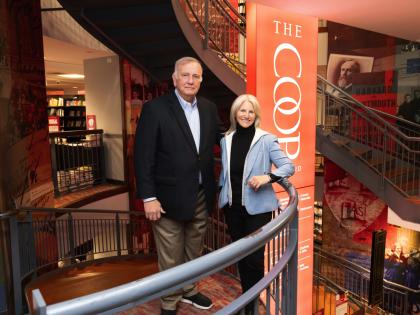| One day in 1820 amateur naturalists Elijah Hamlin and Ezekiel Holmes were poking around on a hill in Paris, Maine, in the southwestern part of the state, when they spied a clear green crystal sticking out of the dirt. It was the first gem tourmaline discovered in the United States, and the site, later named Mount Mica, became the nation's first gem tourmaline mine. Elijah and his son, Augustus Choate, M.D. 1855, began blasting Mount Mica in earnest in 1868 and disclosed new pockets rich in gem-quality tourmalines. From the harvest of Mount Mica, Augustus caused to be made the famous necklace shown here. Eleven species of tourmaline exist, each with different chemistry, but the species most often used for gems is elbaite. The Hamlin Necklace features 18 elbaite tourmalines (the central stone of 34.25 carats), with 52 small beryls and tourmalines--228.12 carats in all. Mount Mica once gave up a crystal that when cut yielded a flawless 63-carat gem, sold to Tiffany. Tourmalines were also mined in nearby Newry, Maine. Three prospectors with a hunch blasted open a pocket in an abandoned mine there in 1972 and made the biggest tourmaline find ever in North America. In four weeks they removed more than a ton of tourmalines. Tourmaline, an October birthstone, is an accommodating gem, for it may be had in every color of the spectrum, as well as in colorless and black forms. Stones unfit for jewelry can be sold as pleasing mineral specimens or put to industrial uses. Squeeze or heat a tourmaline and it becomes electrically charged. Benjamin Franklin used the stones in his investigations into electricity. They are still used in pressure gauges. Slices of tourmaline measured the force of the first atom-bomb blasts. Augustus Hamlin gave his collection of Maine tourmalines to Harvard in 1892, and the necklace came too, but later. A range of remarkable tourmalines, both raw and in jewelry, from Maine and elsewhere, may be seen in an instructive exhibit, Romancing the Stone: The Many Facets of Tourmaline, through January 20, 2002, at the Harvard Museum of Natural History, 26 Oxford Street, Cambridge. |
Down East Dazzlers
What Elijah, Ezekiel, and Augustus found
You might also like
Harvard Students form Pro-Palestine Encampment
Protesters set up camp in Harvard Yard.
Harvard Coop’s Changing of the Guard
New leadership for a staple Square retailer
Artificial Intelligence in the Academy
Harvard symposium assesses the new technology.
Most popular
More to explore
Harvard Cardinal Robert W. McElroy on the Changing Catholic Church
Cardinal Robert W. McElroy on how the Catholic Church has moved towards inclusivity.
AI as Cancer Oracle?
How is artificial intelligence (AI) being used for cancer detection and prevention?
The Harvard Graduate and Early Vegetarian Benjamin Smith Lyman
Brief life of the vegetarian trailblazer, 1835-1920








